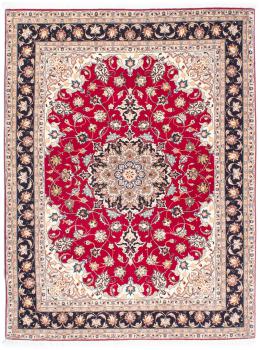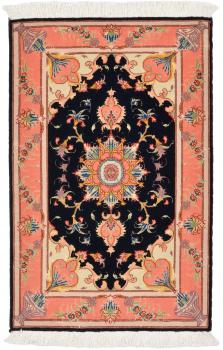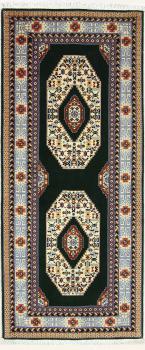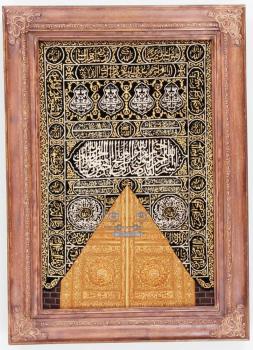Rarity thanks to Knotting Density and Knotter
Nowadays carpets are available in almost all designs for little money. Machines manage to knot a single carpet from dyed yarns within 60 minutes. However, this no longer has much to do with the centuries-old tradition of hand knotting, where knot by knot is crafted by hand for months. The result is an incomparably fine, unique piece with which a machine-knotted carpet has little in common.
Persian rug knotting has long been and still is one of the most challenging and at the same time of the highest quality. Not only is the Senneh knot extremely robust in direct comparison to other knot types, but the density is also almost unmatched. Persian rugs play a highly important role in the segment of over 500,000 knots per m2 and are virtually unrivaled concerning rugs with 1,000,000 knots per m2 or higher. Last but not least, it is mostly Persian rugs that, with a certain rarity, at least maintain or even increase their value over time.
The rarity and knot density of a rug is determined by one main factor, the knotter. While a knot density beyond 500,000 knots per m2 requires a lot of experience and skill from the knotter, a density around 1,000,000 knots and more is reserved for the most experienced. As a guideline, an experienced knotter will knot about 10,000 knots a day, which means he will need about 50 working days for a single square meter of a 500.000 knots / m2 rug. This means that very fine rugs can take up to a year to craft.
The knotting density is therefore an excellent indicator for the rarity and the effort, respectively the fineness of a rug. Since the knotting density depends solely on the skill of the knotter, this is a decisive factor which, for example, collectors include in their purchase decision and evaluation. Some well-known master knotters have their own studios in which they pass on their knowledge and skills and supervise the production of their works. Special rugs are therefore not only signed by the knotter's name, but can also bear the studio's name instead. Other rugs may be signed with the name of the customer.
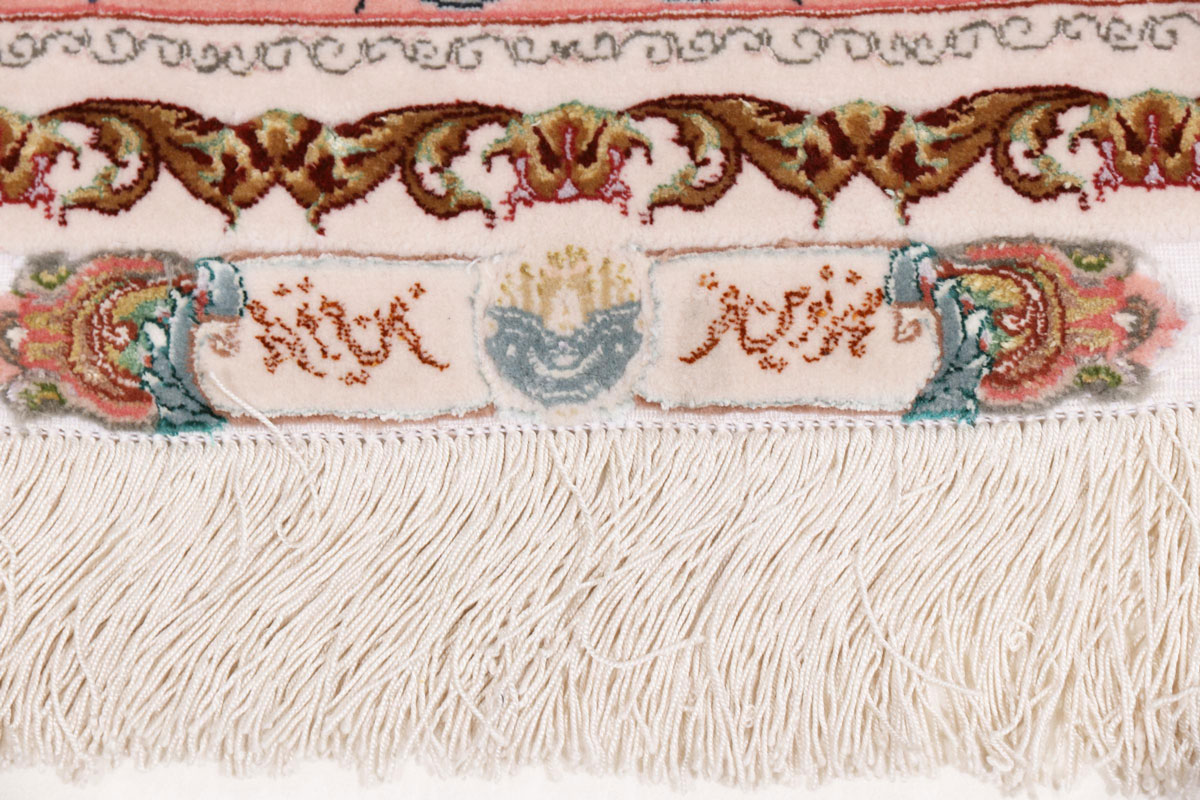
Signature of the master knotter Shirfar on a Tabriz silk rug
Classic Knotting Densities
In the following the classical knotting densities of oriental rugs are listed, categorized for an approximate orientation and estimation.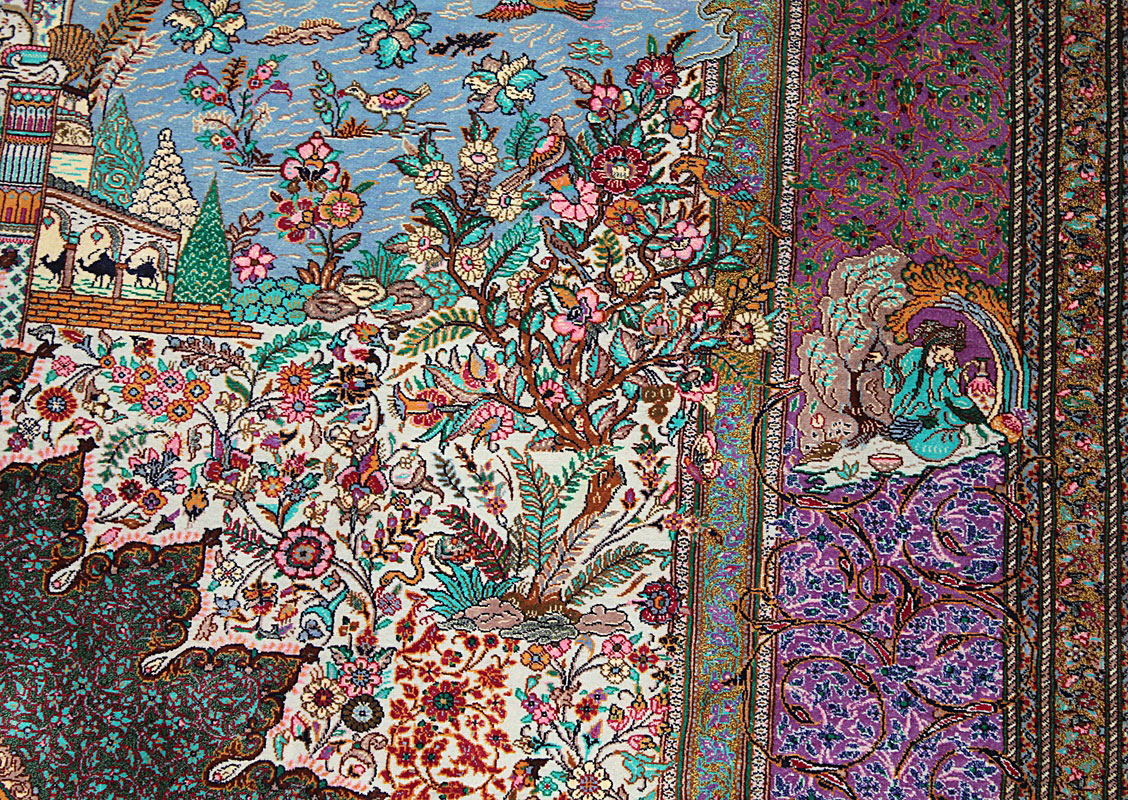
Qom silk rug with over 1.4 million knots / m2 by Jamshidi
| Knots per square meter | |
|---|---|
| Very coarse | 40.000-80.000 |
| Coarse | 80.000-120.000 |
| Average | 120.000-240.000 |
| Somewhat finer | 240.000-360.000 |
| Fine | 360.000-500.000 |
| Very fine | 500.000-1.000.000 |
| Exceptionally Fine | 1.100.000 or higher |
Knotting density in Raj
Raj is often used as a quality unit in Iran. The number of knots is counted on 7 cm in the direction of the warp yarn on the back of the rug. This number gives the Raj value.| Knots on 7cm | |
|---|---|
| 40 knots | 40 Raj, equivalent to approximately 300,000 knots per m2 |
| 50 knots | 50 Raj, equivalent to approximately 500,000 knots per m2 |
| 60 knots | 60 Raj, equivalent to approximately 750,000 knots per m2 |
| 70 knots | 70 Raj, equivalent to approximately 1,000,000 knots per m2 |
| 80 knots | 80 Raj, equivalent to approximately 1,300,000 knots per m2 |
Examples of Persian rugs with Raj
These rugs come from the city of Tabriz. The rugs knotted there are usually measured in Raj.
Categories Persian Rugs
Robust Persian rugs that are ideal for everyday use and affordable at the same time.
Learn more...
Knotted by former nomads with straight-line patterns, today very popular again.
Learn more...
Garden motifs from Persian gardens, for which these rugs are known and appreciated.
Learn more...
Some of the finest rugs come from Isfahan. Also collectors find a highly valuable piece here.
Learn more...
Typical nomadic carpets from the old Shiraz among the ancient ruins of Persepolis.
Learn more...

